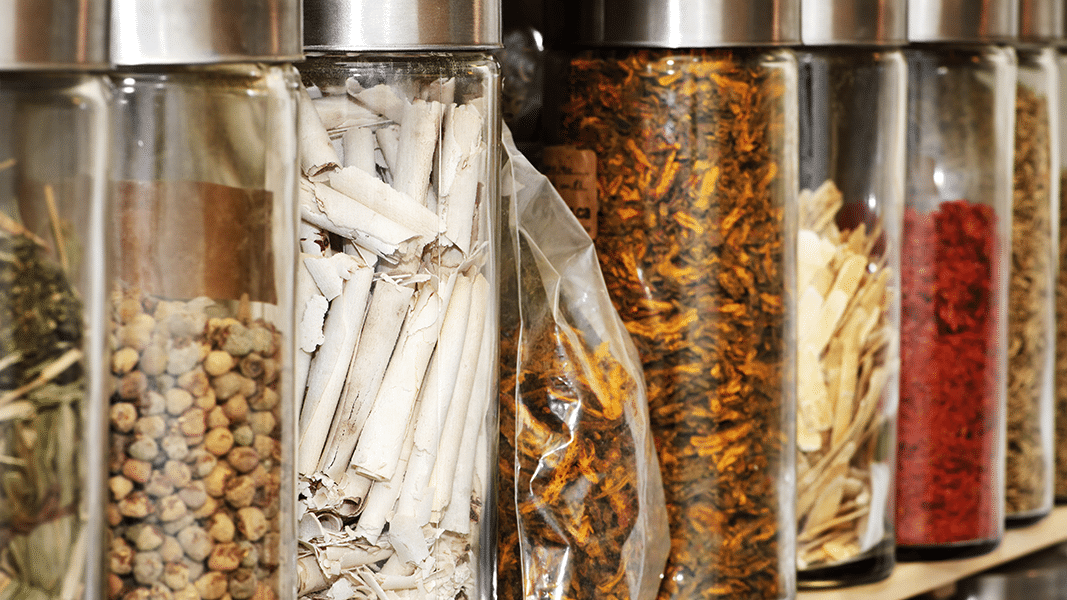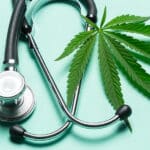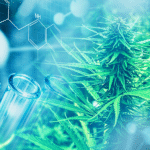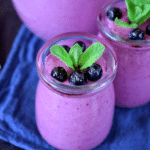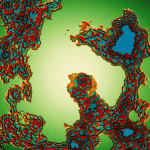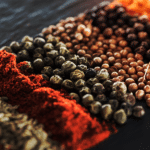The human endocannabinoid system (ECS) is so named because it responds to cannabis compounds. But cannabis is not its only regulator – there are a plethora of molecules derived from plants or even single-cellular organisms that interact with the ECS.
Italian and Swedish scientists published a 2019 review in Planta describing “cannabimimetic” plants. These plants are not cannabis impostors, but they produce interesting chemicals that interact with the ECS, a system fundamental to all vertebrate organisms.
The authors cover dozens of plant species producing a total of roughly 50 cannabinoid-related molecules. Quite a few of these herbs have been used as traditional medicines for centuries, and their medical effects align with our modern understanding of the ECS’s fundamental role in many diseases. Some plants even produce the human endocannabinoids anandamide and 2-AG, though there is no known plant with cannabinoid receptors.
Quercetin, found in marigolds and many fruiting plants, can increase the body’s expression of CB1 cannabinoid receptors. It has been studied as a dietary nutrient protective against cardiovascular and metabolic disorders. Resveratrol – an antioxidant found in red grapes, peanuts, and other plant species – also interacts with CB1 receptors. But its effect is not at all clear.
One study found that resveratrol (often touted as a reason to drink red wine) increases the expression of CB1 and CB2 receptors on the cell surface. Another suggested that resveratrol elevates endocannabinoid levels, which increases the activation of CB1, causing a neuroprotective effect. An earlier 2009 report found that resveratrol inhibits CB1 with high affinity, but the authors retracted this paper when their follow up studies could not replicate the result.
Other Examples of Cannabimimetic Plants
Phytocannabinoid-Like Compounds
Some plants produce compounds nearly identical to the phytocannabinoids, but with modified molecular “tails.” (THC and its propyl variant THCV are identical except for their tails, yet the former activates CB1, while the latter blocks it.) Akin to the 100 or so minor cannabinoids found in cannabis trichomes, the activities of most of these molecules are only partially understood.
- Perrottetinene, derived from some mosses and species of liverwort, has a slightly bulkier tail than THC and activates the CB1 and CB2 receptors.
- A few analogs of cannabidiol (CBD) are produced by legumes in the Fabaceae family, but their cannabinoid activities are unknown. These CBD-mimics have more rigid tails that are large like in perrottetinene.
- Cannabigerolic acid (CBGA) itself may be produced by Helichrysum umbraculigerum. This is the only known example of one of the “classical” phytocannabinoids being produced by another plant.
- Chemicals like cannabichromenic acid (CBCA) are produced by Rhododendron and fungal species to kill off competition, be it fungal, bacterial, or viral.
Endocannabinoid Boosters
Cannabinoid receptors are a key component of the endocannbinoid system, which also employs metabolic enzymes and transporters (fatty acid binding proteins) to regulate endocannabinoid levels. Many plant compounds target these proteins to influence the ECS.
- Aloe vera, soy, and many other plants produce kaempferol, which blocks and delays the degradation of anandamide.
- Soy, alfalfa, peanuts, and other plants synthesize biochanin A, which can also block the breakdown of anandamide by FAAH.
- Euphol, from the “Pencil cactus” or Euphorbia tirucalli, blocks the breakdown of the body’s own cannabinoid 2-AG by monoacylglycerol lipase. Its extracts are used to treat pain.
- Two terpenes, α- and β-amyrin, prevent the breakdown of 2-AG and have demonstrated beneficial effects in a model of pancreatitis. The amyrins are found in species of ficus, eucalyptus, locustberries, and other species.
CB2 Agonists
CB2 is the cannabinoid receptor tasked with preventing inflammatory damage. Activating CB2 can ameliorate common diseases of chronic inflammation such as obesity, neurodegeneration, and autoimmune disorders.
- Celastrol activates the CB2 receptor, causing an anti-inflammatory effect that may explain why it is used in traditional Chinese medicine to treat arthritis, atherosclerosis, and lupus.
- Fatty acids derived from Echinacea activate CB2 and related anti-inflammatory receptors.
- Magnolia bark contain two polyphenols – honokiol and magnolol – that weakly activate the CB2 receptor.
Dual Cannabinoid Receptor Ligands
Some cannabinoids don’t bind to a single receptor, but have affinity for both CB1 and CB2. Both THC and 2-AG have significant activity at this pair of receptors. So do certain plant compounds.
- Most colored berries contain cyanidin, which binds to both cannabinoid receptors, conferring a neuroprotective effect. However, some metabolites of cyanidin block the cannabinoid receptors, suggesting that berries are homeostatic regulators that balance endocannabinoid tone.
- Anthocyanins give fruits their purple, black and blue colors. Beyond just cyanidin, chemicals like peonidin and delphinidin also bind to both cannabinoid receptors.
- Auroglaucin, derived from an aspergillus fungus, binds to both cannabinoid receptors as well as opioid receptors. Whether it activates or inhibits cannabinoid receptors is still unknown.
CB1 Antagonists
Blocking CB1 activity has shown promise for several metabolic conditions. Herbal and dietary CB1 antagonists may have beneficial effects on the gut without causing unwanted central nervous system side effects.
- Boiling tea leaves extracts catechin, a flavanol that can inhibit CB1 receptor signaling and may regulate insulin, cholesterol, and blood pressure.
- Carrots produce carotatoxin, which has the formal name falcarinol. It is an inverse agonist of CB1, meaning it will not only block CB1 activity, but will reduce CB1 signaling below the normal level.
- Some licorice species create the unfortunately-named 18β-glycyrrhetnic acid, which confers anti-obesity effects by diminishing the interaction between endogenous anandamide and CB1.
- A small African tree, Voacanga africana, produces three extremely complex CB1 antagonists, called voacangines, which are chemically similar to ibogaine. Ibogaine is a derivative of iboga, the West African psychedelic plant.
CB1 Antagonists/CB2 Agonists
Ligands that increase CB2 activity while blocking CB1 show promise for treating addictive and metabolic disorders.
- Many plants in the genus of shrubs Zanthoxylum produce γ-sanshool, which activates CB2 while simultaneously blocking CB1. Cannabis produces THCV, which also has this dual action, though γ-sanshool is a long, flexible, oily molecule, making is structurally more like anandamide (the endocannabinoid) than THCV (the phytocannabinoid).
Non-Cannabinoid Receptor Binding
The effects of these and other plant compounds extend well beyond the classical endocannabinoid system. Phytocannabinoids and endocannabinoids interact directly with TRP ion channels and PPAR receptors (on the cell’s nucleus) that modulate gene expression. TRP receptors and PPARs are also regulated by various herbal chemicals.
- A white birch species produces betulinic acid, which binds CB1, CB2, and activates PPAR receptors.
- Amorfrutin is a category of CBG-like molecules synthesized by numerous plants, particularly the sunflower species in the Helichrysum genus. Some amorfrutins are PPARγ agonists.
Pepper Species
The West African pepper genus, Piper, may be one of the most cannabimimetic families around, with numerous species producing cannabinoid modulators. Guineensine, present in the black pepper accompanying your table salt, boosts endocannabinoid tone by blocking and delaying endocannabinoid reuptake.
Black pepper also contains piperine, a potent modulator of the TRPV1 receptor, which is implicated in pain and neurodegeneration. Anandamide and CBD also bind to TRPV1.
Another cannabimimetic species Piper methysticum, is renowned as kava. Historically, kava has been used for treating migraines, insomnia, menstrual problems, weight loss, and convulsions. It produces many powerful chemicals, including yangonin, which binds to the CB1 receptor. Whether yangonin activates or inhibits CB1 is currently unclear.
Any discussion of cannabinoids would be remiss to ignore β-caryophyllene (caryophyllene or BCP), a terpene found in cannabis, many leafy green vegetables, and black pepper. Caryophyllene is an anti-inflammatory chemical that potently activates CB2. It is one of the best examples of how diet directly affects endocannabinoid tone. The anti-inflammatory properties of caryophyllene are significant for obesity, type 2 diabetes, and other metabolic complications: “[Eating] as little as 4 mg/kg/day might render it an effective anti-inflammatory,” according to Dr. Ethan Russo.
The Evolutionary Motive
What is the evolutionary impetus for the creation of cannabinoids? Even single-cellular organisms like cyanobacteria – the descendant of the original photosynthetic bacteria – produce chemicals that act on cannabinoid receptors. But the cannabinoid receptors evolved much later, first appearing in the ancient Hydra (not the god) around 500 million years ago.
It is still unclear why plants produce cannabinoids without corresponding receptors to bind with. Some insects do the same. There may be a yet undiscovered mechanism by which plants regulate themselves with phytocannabinoids. In humans, the ECS has developed into a homeostatic system – a fundamental adaptogenic mechanism that enables our bodies to maintain health through the stresses of life.
Time-Honored Medicine
CBD is all the rage these days. It has become a wellness craze. And while it’s fashionable to fixate on a single cannabis component, let’s not lose sight of the fact that herbal medicine provides countless remedies relevant to modern disease.
Single-molecule CBD and single-molecule THC are both FDA-approved medications. But purified pharmaceuticals are not inherently superior to multicomponent, whole plant formulations. The medical development of cannabinoids should build upon traditional knowledge and folk curatives, which often involved a mixture of various herbs, including CBD-rich cannabis, which has been part of the human pharmacopeia for thousands of years.
Not every herb is safe, but there’s ample precedent. At least with herbs we have a long, successful history, while novel pharmaceutical development has led us into a cul-de-sac of escalating side effects, antibiotic resistance, and intractable degenerative disease. As we welcome cannabis back into the pantheon of medicinal herbs, let’s honor the “crude” plants that have sustained humankind since time immemorial.
Adrian Devitt-Lee is a research scientist and longtime Project CBD contributor. © Copyright, Project CBD. May not be reprinted without permission.

